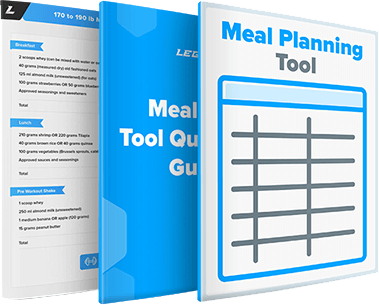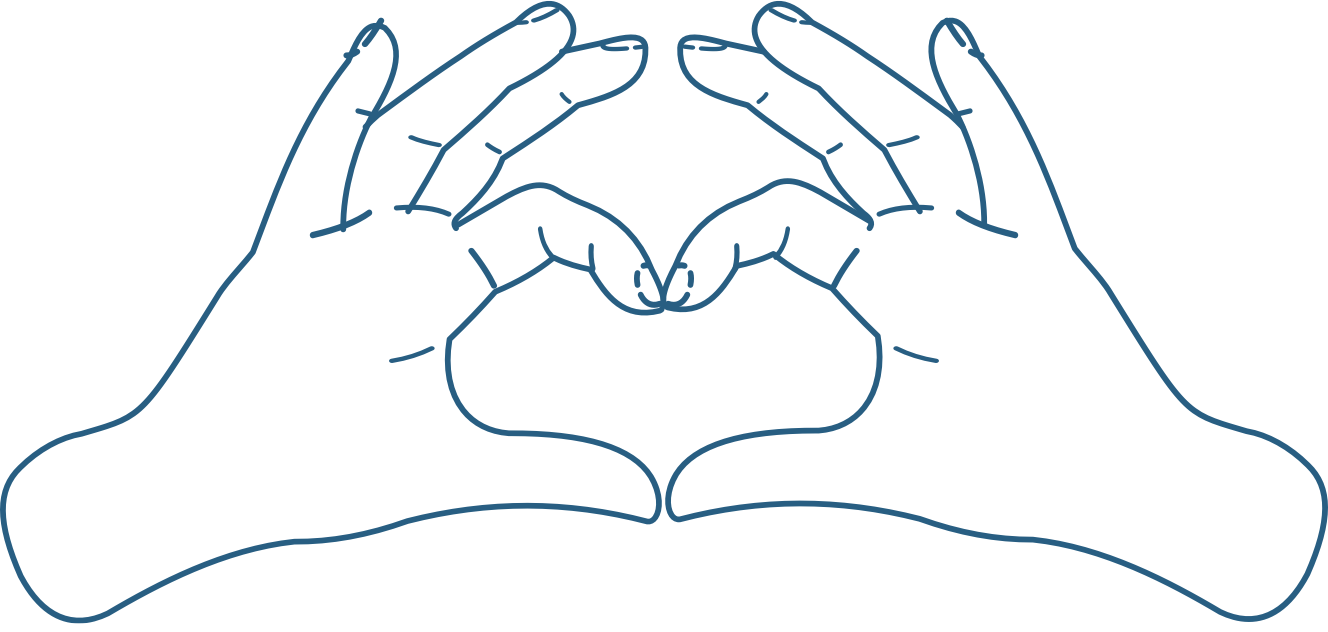If you want to know how your one-rep maxes measure up, and how to use them to help you gain strength and muscle faster, then you want to read this article.
Key Takeaways
- A one-rep max is the maximum amount of weight you can lift for a single repetition of a given exercise through a full range of motion with proper technique.
- The easiest way to calculate your one-rep max is to review your training log, find the most weight you’ve lifted on an exercise for 3 to 6 reps, and plug in the weight and reps into the calculator in this article.
- By tracking your one-rep max over time, you can ensure you’re gaining muscle effectively.
Just want to know your one-rep max (1RM) and nothing else? Here’s the calculator:
Want to know why your one-rep max matters, how it compares to other people, and how to use it to gain strength and muscle faster?
Read on, because I’m going to show you.
The first thing you need to know about the one-rep max is that it’s good for more than bragging rights.
Sure, it’s fun to know how you stack up against other guys and gals, but there’s a better reason to care:
Knowing your one-rep max helps you maintain optimal workout intensity (and thereby achieve optimal results).
It allows you to train hard enough to get the maximum muscle-building stimulus out of every workout, without training so hard that you increase the risk of getting injured or running into symptoms related to overtraining.
This is particularly important if you’re serious about getting stronger on the “big lifts” like the squat, deadlift, bench press, and military press, where you’re moving the heaviest weights.
So, by the end of this article, you’re going to understand what a one-rep max is, how to calculate your 1RM for every exercise, how your numbers compare to other weightlifters, and how to use them to gain muscle and strength as fast as possible.
Let’s get started.
- What Is A One-Rep Max?
- How to Estimate Your One-Rep Max
- How Do Your Numbers Measure Up?
- How Tracking Your One-Rep Max Helps You Build Muscle
- The Bottom Line on Calculating Your One-Rep Max
Table of Contents
+What Is A One-Rep Max?

A one-rep max is the maximum amount of weight you can lift for a single repetition of a given exercise through a full range of motion with proper technique.
Let’s unpack that a bit. A 1RM is …
- The maximum amount of weight you can lift for one repetition … assuming you’re warmed up, rested, and just starting your workout (without doing any other sets or exercises beforehand).
- Specific to each exercise. Your one-rep max for your dumbbell press could be very different from your one-rep max for your bench press, even though they involve similar muscle groups, so you need to calculate it separately for each exercise.
- Requires full range of motion. Half-squats don’t count.
- Requires proper technique. If you’re rounding your back while deadlifting, letting your knees cave in while squatting, or letting your butt hop off the pad while bench pressing, then you’re cheating.
Now, the only 100%-accurate way to know how much weight you can lift for a single rep is to actually do it, but that comes at a cost.
A true one-rep max attempt is time-consuming, risky, and exhausting.
- To test your true max, you first need to train with lighter weights and lower volumes for several days to a week beforehand to make sure you’re rested.
- You then have to push yourself very close to absolute muscular failure, which is where your technique is most likely to break down and precipitate an injury.
- Finally, a true one-rep max test is going to leave you feeling drained for at least a few days, during which you’ll need to use lighter weights or lower volumes.
Some advanced lifters say it takes them at least 1 to 2 weeks before they feel normal again after a one-rep max test, especially with squats and deadlifts.
This is why most people rarely do true one-rep max tests. Instead, they use equations to predict their one-rep max based on how many reps they can get with a lighter weight.
For example, if you bench press a weight that allows you to get 5 reps before reaching failure, you can then plug the weight and reps into a calculator to estimate your one-rep max.
These equations can predict your one-rep max very accurately, especially if you use a weight that allows you to get 10 or fewer reps.
Personally, I use a weight that allows me to get 3 to 6 reps for calculating my 1RMs.
How to Estimate Your One-Rep Max
The three most commonly used one-rep max equations are the Brzycki, Baechle, and dos Remedios equations.
As you’ll see, the results are very similar formula to formula.
I’ve included all three in the calculator below because some people like to get fancy and average the results from each, but personally I just stick with the Brzycki results.
To use one of these equations, you first need to test your “rep max,” which is is the amount of weight you can lift for a given number of reps.
For example, if you can bench press 225 pounds for 5 reps, that’s your “5-rep max.”
One way to find this number is to look at your workout log from the past few weeks and find the most weight you lifted for an exercise and for how many reps. Then, you can plug those numbers into the calculator.
This is how I typically estimate my one-rep max, because it’s convenient, fast, and doesn’t require changing my workout routine.
There are a few problems with this method that can make you underestimate your true one-rep max, though, including:
- Doing one exercise after another in your workouts (flat bench after incline, for example), which makes you weaker on the second exercise.
- Training consistently for several weeks without deloading, which means your true strength is at least slightly impaired by residual fatigue.
- Training several reps shy of failure on your working sets, which means you haven’t truly pushed yourself to your limits.
So, if you want to get an even more accurate estimate, then you want to do a rep-max test.
Here’s how it works:
- Pick an exercise to use for your rep-max test and move it to the beginning of your workout. For example, if you’re following The Bigger Leaner Stronger Program, do the bench press on Day 1 before incline bench press, not after.
- Do a thorough warm-up.
- Once you’re finished your warm-up, rest at least 3 to 4 minutes.
- Pick a weight that you think you can lift for 3 to 6 repetitions.
- Get set up, brace properly, and do as many reps as you can before your technique starts to break down or your reach muscular failure.
- If you got 3 to 6 reps, write down how much weight you used and how many reps you got. This is your “rep max.”
- If you got 7 or more reps, add 5 to 10 pounds to the bar, rest at least 3 to 5 minutes, and try again. You might be a little tired, but you should still have enough energy to get a reasonably accurate number.
- After finishing your rep-max test, finish your regular workout.
Ideally, you’ll do this test on separate days for the squat, bench press, deadlift, and overhead press.
A good frequency for 1RM testing is every 4 to 6 months. That’s often enough to provide accurate numbers in your programming, but infrequent enough to not get in the way of your normal workout routine.
You don’t need to repeat this process for isolation exercises like biceps curls, as you can get accurate (enough) one-rep max estimates for those exercises through your normal workouts.
I also recommend you schedule your rep-max rest for the first day back after a week-long deload. This ensures you’re recovered, rested, and ready to give it your all.
For example, here’s how the test could fit into your weekly schedule:
Monday
Deload
Tuesday
Deload
Wednesday
Deload
Thursday
Deload
Friday
Deload
Saturday
Rest
Sunday
Rest
Monday
Rep-Max Test for Squat
Tuesday
Rep-Max Test for Bench Press
Wednesday
Rep-Max Test for Deadlift
Thursday
Rep-Max Test for Overhead Press
Friday
Rest or Normal Workout
Saturday
Rest
Sunday
Rest
Make sure you get plenty of sleep before any rep-max tests, and (ideally) eat a meal with protein and carbs 1 to 2 hours pre-workout. If you’re feeling a little groggy or out of sorts, a pre-workout supplement can help, too. 🙂
Now that you have your rep max, you can plug these numbers into the one-rep max calculator:
For example, my best 3-rep max for bench press is 290 pounds. Using the calculator, that would peg my estimated best one-rep max at 307 pounds.
If you’re curious what all of the other numbers mean, how your numbers stack up against other lifters, and how to use your one-rep max to gain muscle and strength, then keep reading.


How Do Your Numbers Measure Up?

Once you know your one-rep maxes, you inevitably want to know how they rank.
Well, you can use the tables below to find out.
They come to us from Dr. Lon Kilgore and Mark Rippetoe and are based on a systematic review of decades of competitive weightlifting performance.
The numbers are one-rep maxes and keep in mind they don’t represent the highest levels of strength possible–they’re just performance benchmarks.
Heavier people can generally lift more than lighter people, so each table categorizes lifters into 5 classes based on how much they can lift relative to their body weight and level of experience. Here are the categories:
Untrained
This is what you would expect from someone who hasn’t trained on the exercises but who can do them correctly.
Novice
This is what you would expect from someone who has trained regularly on an exercise for 3 to 6 months.
Intermediate
This is what you would expect from someone who has trained regularly on an exercise for 1 to 3 years.
Advanced
This is what you would expect from someone who has trained regularly on an exercise for 3+ years.
Elite
This is what you would expect from a genetically gifted athlete competing in strength sports.
|
Bench Press – Adult Men |
|||||
| Body Weight | Untrained | Novice | Intermediate | Advanced | Elite |
|---|---|---|---|---|---|
| 114 | 85 | 110 | 130 | 180 | 220 |
| 123 | 90 | 115 | 140 | 195 | 240 |
| 132 | 100 | 125 | 155 | 210 | 260 |
| 148 | 110 | 140 | 170 | 235 | 290 |
| 165 | 120 | 150 | 185 | 255 | 320 |
| 181 | 130 | 165 | 200 | 275 | 345 |
| 198 | 135 | 175 | 215 | 290 | 360 |
| 220 | 140 | 185 | 225 | 305 | 380 |
| 242 | 145 | 190 | 230 | 315 | 395 |
| 275 | 150 | 195 | 240 | 325 | 405 |
| 319 | 155 | 200 | 245 | 335 | 415 |
| 320+ | 160 | 205 | 250 | 340 | 425 |
| Body Weight | Untrained | Novice | Intermediate | Advanced | Elite |
|---|---|---|---|---|---|
| 52 | 37.5 | 50.0 | 60.0 | 82.5 | 100.0 |
| 56 | 40.0 | 52.5 | 62.5 | 90.0 | 110.0 |
| 60 | 45.0 | 57.5 | 70.0 | 95.0 | 117.5 |
| 67 | 50.0 | 65.0 | 77.5 | 107.5 | 132.5 |
| 75 | 55.0 | 70.0 | 85.0 | 115.0 | 145.0 |
| 82 | 60.0 | 75.0 | 90.0 | 125.0 | 157.5 |
| 90 | 62.5 | 80.0 | 97.5 | 132.5 | 162.5 |
| 100 | 62.5 | 82.5 | 102.5 | 137.5 | 172.5 |
| 110 | 65.0 | 85.0 | 105.0 | 142.5 | 180.0 |
| 125 | 67.5 | 87.5 | 107.5 | 147.5 | 185.0 |
| 145 | 70.0 | 90.0 | 112.5 | 152.5 | 190.0 |
| 145+ | 72.5 | 92.5 | 115.0 | 155.0 | 192.5 |
| Body Weight | Untrained | Novice | Intermediate | Advanced | Elite |
|---|---|---|---|---|---|
| 97 | 50 | 65 | 75 | 95 | 115 |
| 105 | 55 | 70 | 80 | 100 | 125 |
| 114 | 60 | 75 | 85 | 110 | 135 |
| 123 | 65 | 80 | 90 | 115 | 140 |
| 132 | 70 | 85 | 95 | 125 | 150 |
| 148 | 75 | 90 | 105 | 135 | 165 |
| 165 | 80 | 95 | 115 | 145 | 185 |
| 181 | 85 | 110 | 120 | 160 | 195 |
| 198 | 90 | 115 | 130 | 165 | 205 |
| 199+ | 95 | 120 | 140 | 175 | 220 |
| Body Weight | Untrained | Novice | Intermediate | Advanced | Elite |
|---|---|---|---|---|---|
| 44 | 22.5 | 30.0 | 35.0 | 42.5 | 52.5 |
| 48 | 25.0 | 32.5 | 37.5 | 45.0 | 57.5 |
| 52 | 27.5 | 35.0 | 37.5 | 50.0 | 62.5 |
| 56 | 30.0 | 37.5 | 40.0 | 52.5 | 65.0 |
| 60 | 32.5 | 40.0 | 42.5 | 57.5 | 67.5 |
| 67 | 35.0 | 40.0 | 47.5 | 62.5 | 75.0 |
| 75 | 37.5 | 42.5 | 52.5 | 65.0 | 85.0 |
| 82 | 37.5 | 50.0 | 55.0 | 72.5 | 90.0 |
| 90 | 40.0 | 52.5 | 60.0 | 75.0 | 95.0 |
| 90+ | 42.5 | 55.0 | 62.5 | 80.0 | 100.0 |
| Body Weight | Untrained | Novice | Intermediate | Advanced | Elite |
|---|---|---|---|---|---|
| 114 | 95 | 180 | 205 | 300 | 385 |
| 123 | 105 | 195 | 220 | 320 | 415 |
| 132 | 115 | 210 | 240 | 340 | 440 |
| 148 | 125 | 235 | 270 | 380 | 480 |
| 165 | 135 | 255 | 295 | 410 | 520 |
| 181 | 150 | 275 | 315 | 440 | 550 |
| 198 | 155 | 290 | 335 | 460 | 565 |
| 220 | 165 | 305 | 350 | 480 | 585 |
| 242 | 170 | 320 | 365 | 490 | 595 |
| 275 | 175 | 325 | 375 | 500 | 600 |
| 319 | 180 | 335 | 380 | 505 | 610 |
| 320+ | 185 | 340 | 390 | 510 | 615 |
| Body Weight | Untrained | Novice | Intermediate | Advanced | Elite |
|---|---|---|---|---|---|
| 52 | 42.5 | 82.5 | 92.5 | 135.0 | 175.0 |
| 56 | 47.5 | 87.5 | 100.0 | 145.0 | 187.5 |
| 60 | 50.0 | 95.0 | 110.0 | 155.0 | 200.0 |
| 67 | 57.5 | 107.5 | 122.5 | 172.5 | 217.5 |
| 75 | 62.5 | 115.0 | 135.0 | 185.0 | 235.0 |
| 82 | 67.5 | 125.0 | 142.5 | 200.0 | 250.0 |
| 90 | 70.0 | 132.5 | 152.5 | 207.5 | 257.5 |
| 100 | 75.0 | 137.5 | 160.0 | 217.5 | 265.0 |
| 110 | 77.5 | 145.0 | 165.0 | 222.5 | 270.0 |
| 125 | 80.0 | 147.5 | 170.0 | 227.5 | 272.5 |
| 145 | 82.5 | 152.5 | 172.5 | 230.0 | 277.5 |
| 145+ | 85.0 | 155.0 | 177.5 | 232.5 | 280.0 |
| Body Weight | Untrained | Novice | Intermediate | Advanced | Elite |
|---|---|---|---|---|---|
| 97 | 55 | 105 | 120 | 175 | 230 |
| 105 | 60 | 115 | 130 | 190 | 240 |
| 114 | 65 | 120 | 140 | 200 | 255 |
| 123 | 70 | 130 | 150 | 210 | 265 |
| 132 | 75 | 135 | 160 | 220 | 275 |
| 148 | 80 | 150 | 175 | 240 | 295 |
| 165 | 90 | 160 | 190 | 260 | 320 |
| 181 | 95 | 175 | 205 | 275 | 330 |
| 198 | 100 | 185 | 215 | 285 | 350 |
| 199+ | 110 | 195 | 230 | 300 | 365 |
| Body Weight | Untrained | Novice | Intermediate | Advanced | Elite |
|---|---|---|---|---|---|
| 44 | 25.0 | 47.5 | 50.0 | 80.0 | 105.0 |
| 48 | 27.5 | 52.5 | 60.0 | 85.0 | 110.0 |
| 52 | 30.0 | 55.0 | 62.5 | 90.0 | 115.0 |
| 56 | 32.5 | 60.0 | 67.5 | 95.0 | 120.0 |
| 60 | 35.0 | 62.5 | 72.5 | 100.0 | 125.0 |
| 67 | 37.5 | 67.5 | 80.0 | 110.0 | 135.0 |
| 75 | 40.0 | 72.5 | 85.0 | 117.5 | 145.0 |
| 82 | 42.5 | 80.0 | 92.5 | 125.0 | 150.0 |
| 90 | 45.0 | 87.5 | 97.5 | 130.0 | 160.0 |
| 90+ | 50.0 | 90.0 | 105.0 | 137.5 | 165.0 |
| Body Weight | Untrained | Novice | Intermediate | Advanced | Elite |
|---|---|---|---|---|---|
| 114 | 55 | 75 | 90 | 110 | 130 |
| 123 | 60 | 80 | 100 | 115 | 140 |
| 132 | 65 | 85 | 105 | 125 | 150 |
| 148 | 70 | 95 | 120 | 140 | 170 |
| 165 | 75 | 100 | 130 | 155 | 190 |
| 181 | 80 | 110 | 140 | 165 | 220 |
| 198 | 85 | 115 | 145 | 175 | 235 |
| 220 | 90 | 120 | 155 | 185 | 255 |
| 242 | 95 | 125 | 160 | 190 | 265 |
| 275 | 95 | 130 | 165 | 195 | 275 |
| 319 | 100 | 135 | 170 | 200 | 280 |
| 320+ | 100 | 140 | 175 | 205 | 285 |
| Body Weight | Untrained | Novice | Intermediate | Advanced | Elite |
|---|---|---|---|---|---|
| 52 | 22.5 | 32.5 | 40.0 | 50.0 | 60.0 |
| 56 | 25.0 | 35.0 | 45.0 | 52.5 | 65.0 |
| 60 | 27.5 | 37.5 | 47.5 | 57.5 | 70.0 |
| 67 | 30.0 | 42.5 | 55.0 | 62.5 | 77.5 |
| 75 | 32.5 | 45.0 | 57.5 | 70.0 | 85.0 |
| 82 | 35.0 | 50.0 | 62.5 | 75.0 | 100.0 |
| 90 | 37.5 | 52.5 | 65.0 | 77.5 | 105.0 |
| 100 | 40.0 | 55.0 | 70.0 | 82.5 | 115.0 |
| 110 | 42.5 | 57.5 | 72.5 | 85.0 | 120.0 |
| 125 | 42.5 | 60.0 | 75.0 | 87.5 | 122.5 |
| 145 | 45.0 | 60.0 | 75.0 | 90.0 | 125.0 |
| 145+ | 45.0 | 62.5 | 77.5 | 92.5 | 130.0 |
| Body Weight | Untrained | Novice | Intermediate | Advanced | Elite |
|---|---|---|---|---|---|
| 97 | 30 | 40 | 50 | 65 | 85 |
| 105 | 35 | 45 | 55 | 70 | 90 |
| 114 | 35 | 50 | 60 | 75 | 100 |
| 123 | 40 | 50 | 60 | 80 | 105 |
| 132 | 40 | 55 | 65 | 85 | 110 |
| 148 | 45 | 60 | 70 | 95 | 120 |
| 165 | 50 | 65 | 75 | 105 | 135 |
| 181 | 50 | 70 | 80 | 110 | 140 |
| 198 | 55 | 75 | 85 | 115 | 150 |
| 199+ | 60 | 80 | 95 | 125 | 160 |
| Body Weight | Untrained | Novice | Intermediate | Advanced | Elite |
|---|---|---|---|---|---|
| 44 | 15.0 | 17.5 | 22.5 | 30.0 | 40.0 |
| 48 | 15.0 | 20.0 | 25.0 | 32.5 | 42.5 |
| 52 | 17.5 | 22.5 | 27.5 | 35.0 | 45.0 |
| 56 | 17.5 | 22.5 | 27.5 | 37.5 | 47.5 |
| 60 | 17.5 | 25.0 | 30.0 | 40.0 | 50.0 |
| 67 | 20.0 | 27.5 | 32.5 | 42.5 | 55.0 |
| 75 | 22.5 | 30.0 | 35.0 | 47.5 | 62.5 |
| 82 | 22.5 | 32.5 | 37.5 | 50.0 | 65.0 |
| 90 | 25.0 | 35.0 | 40.0 | 52.5 | 67.5 |
| 90+ | 27.5 | 37.5 | 42.5 | 57.5 | 72.5 |
| Body Weight | Untrained | Novice | Intermediate | Advanced | Elite |
|---|---|---|---|---|---|
| 114 | 80 | 145 | 175 | 240 | 320 |
| 123 | 85 | 155 | 190 | 260 | 345 |
| 132 | 90 | 170 | 205 | 280 | 370 |
| 148 | 100 | 190 | 230 | 315 | 410 |
| 165 | 110 | 205 | 250 | 340 | 445 |
| 181 | 120 | 220 | 270 | 370 | 480 |
| 198 | 125 | 230 | 285 | 390 | 505 |
| 220 | 130 | 245 | 300 | 410 | 530 |
| 242 | 135 | 255 | 310 | 425 | 550 |
| 275 | 140 | 260 | 320 | 435 | 570 |
| 319 | 145 | 270 | 325 | 445 | 580 |
| 320+ | 150 | 275 | 330 | 455 | 595 |
| Body Weight | Untrained | Novice | Intermediate | Advanced | Elite |
|---|---|---|---|---|---|
| 52 | 35.0 | 65.0 | 80.0 | 107.5 | 145.0 |
| 56 | 37.5 | 70.0 | 87.5 | 117.5 | 157.5 |
| 60 | 40.0 | 77.5 | 92.5 | 127.5 | 167.5 |
| 67 | 45.0 | 85.0 | 105.0 | 142.5 | 185.0 |
| 75 | 50.0 | 92.5 | 112.5 | 155.0 | 202.5 |
| 82 | 55.0 | 100.0 | 122.5 | 167.5 | 217.5 |
| 90 | 57.5 | 105.0 | 130.0 | 177.5 | 230.0 |
| 100 | 60.0 | 110.0 | 135.0 | 185.0 | 240.0 |
| 110 | 62.5 | 115.0 | 140.0 | 192.5 | 250.0 |
| 125 | 65.0 | 117.5 | 145.0 | 197.5 | 257.5 |
| 145 | 67.5 | 122.5 | 147.5 | 202.5 | 262.5 |
| 145+ | 70.0 | 125.0 | 150.0 | 207.5 | 270.0 |
| Body Weight | Untrained | Novice | Intermediate | Advanced | Elite |
|---|---|---|---|---|---|
| 97 | 45 | 85 | 100 | 130 | 165 |
| 105 | 50 | 90 | 105 | 140 | 175 |
| 114 | 55 | 100 | 115 | 150 | 190 |
| 123 | 55 | 105 | 120 | 160 | 200 |
| 132 | 60 | 110 | 130 | 170 | 210 |
| 148 | 65 | 120 | 140 | 185 | 230 |
| 165 | 70 | 130 | 150 | 200 | 255 |
| 181 | 75 | 140 | 165 | 215 | 270 |
| 198 | 80 | 150 | 175 | 230 | 290 |
| 199+ | 85 | 160 | 185 | 240 | 305 |
| Body Weight | Untrained | Novice | Intermediate | Advanced | Elite |
|---|---|---|---|---|---|
| 44 | 20.0 | 37.5 | 45.0 | 60.0 | 75.0 |
| 48 | 22.5 | 40.0 | 47.5 | 65.0 | 80.0 |
| 52 | 25.0 | 45.0 | 52.5 | 67.5 | 87.5 |
| 56 | 25.0 | 47.5 | 55.0 | 72.5 | 90.0 |
| 60 | 27.5 | 50.0 | 60.0 | 77.5 | 95.0 |
| 67 | 30.0 | 55.0 | 62.5 | 85.0 | 105.0 |
| 75 | 32.5 | 57.5 | 67.5 | 90.0 | 115.0 |
| 82 | 35.0 | 62.5 | 75.0 | 97.5 | 122.5 |
| 90 | 37.5 | 67.5 | 80.0 | 105.0 | 132.5 |
| 90+ | 40.0 | 72.5 | 85.0 | 110.0 | 137.5 |
Do Your Numbers Suck?
When I first saw these strength standards, it was a bit of a rude awakening.
I had been training for about seven years and wasn’t anywhere near the advanced/elite numbers.
I was weak (~245 pounds for 3 reps on the Smith Machine Bench Press and the same on the Smith Machine Squat, lol) … and I didn’t have much of a physique, either:

To be fair, I don’t think I looked awful … but that’s not what you aspire to look like after seven years of hard work.
Well, I made quite a few changes in my approach to training and diet and here’s me a few years later:

The improvements haven’t been just skin deep, either.
I was able to take all my lifts from novice or intermediate to advanced or elite levels and I’ve since been able to maintain this physique and strength year-round with relative ease (4 to 6 hours of exercise per week and flexible dieting).
If you want to know more about what made all the difference, check out this article:
How Tracking Your One-Rep Max Helps You Build Muscle

Many people wanting to gain muscle gauge their progress by body weight alone.
If they’re gaining weight, they’re happy. If they’re not, they’re not.
This simplistic method of measuring results can work, but it also can trip you up.
For example, if you’re new to weightlifting and are restricting your calories for fat loss, you’re going to gain muscle and lose fat at the same time.
This makes body weight an unreliable guide on both fronts (fat loss and muscle growth) because it’s not going to change nearly as much as your physique.
And if you’re an experienced weightlifter that can no longer “recomp” effectively, putting too much emphasis on weight can cause other problems.
The most common one is excessive fat gain during bulking periods.
You see, when your primary goal is to just “gain weight,” “bulking” can easily become “bingeing,” which gives the immediate gratification of a bigger number on the scale…but also gets in the way of muscle building.
There are two main reasons for this.
As your body fat percentage rises…
Insulin is a hormone that shuttles nutrients into cells.
Insulin sensitivity refers to how “sensitive” your cells are to insulin’s signals.
As insulin sensitivity drops, the body’s ability to burn fat and build muscle decreases and the likelihood of weight gain increases.
These downsides don’t need much explanation.
Testosterone is the primary hormonal driver of muscle growth and promotes leanness whereas estrogen promotes fatness.
As you can see, gaining fat too quickly and letting your body fat levels go too high while bulking is just counter-productive.
It directly impairs muscle growth and supercharges fat gain, which is bad enough, but it also sets you up to fail in the long term as well.
The bigger picture looks like this:
- The higher you allow your body fat levels to go, the longer you’re going to have to spend in a calorie deficit to undo the “damage.”
- Once your “newbie gains” are behind you, when you’re in a calorie deficit, you’re not going to build any muscle to speak of.
Thus, what happens when you get this wrong is you spend relatively short periods of time bulking at half-mast, wherein you don’t gain much muscle, followed by relatively long periods cutting, wherein you don’t gain any muscle and may even lose some.
This an extremely inefficient way to build a physique.
This is why I recommend that you plan and manage your bulking and cutting periods based on your body fat percentage. I talk about exactly how to pull this off in this article:
Alright, then … what does all this have to do with your one-rep maxes?
Well first, there’s this:
If you want to gain muscle, you’re going to have to get stronger.
In fact, your number-one goal as a natural weightlifter should be to increase whole-body strength over time. It’s just that important.
That’s why compound exercises like the squat, deadlift, bench press, and overhead press are the bread and butter of any effective weightlifting routine.
Now, how do you ensure you’re consistently getting stronger over time? Especially after your “newbie gains” are long gone and progress slows down dramatically?
You need a way to track that progress, of course. And the easiest way to track your progress is to track your one-rep maxes.
We recall, however, that true one-rep max testing is taxing and risky, which is why it’s better to keep an eye on your 1RMs as you train, and to periodically do easier, safer, rep-max testing.
This means that you should be tracking everything you do in every workout , and should see a steady increase in the weights you’re handling over time, and especially on the big compound movements like the squat, deadlift, bench press, and overhead press.
If that is happening–if your one-rep maxes on your key exercises are going up over time–then you know you’re doing a lot right and moving in the right direction.
Sure, you can still hit plateaus that rquire “special” adjustments to break through … and you and still need to know how to adjust your diet based on what’s happening on the scale and in the mirror … but so long as you’re increasing your whole-body strength, you’ve got the “hardest” part of gaining muscle nailed.
Put it all together and keep everything on track and you’ll never get stuck in a rut like I did.
The Bottom Line on Calculating Your One-Rep Max
There are better reasons to track your one-rep maxes than having a real answer to questions like, “How much do ya bench?”
Namely, it’s one of the best ways to ensure you’re training hard enough to gain maximum muscle and strength and minimal body fat.
It’s also a great way to see how advanced of a weightlifter you are, which can inform how you program your training, and realize when you’ve settled into a new plateau that you’ll need to break through.
To track your one-rep maxes, I recommend you review your training logs every so often and plug your numbers for your key lifts into the calculator in this article, and then record the estimates in a spreadsheet or app like Stacked so you can visualize your progress over time.
If you want to get an even more accurate estimate of your one-rep maxes, do rep-max tests every 3 to 4 months.
Do that plus …
- A lot of heavy compound weightlifting.
- Get as strong as possible on the biggest lifts like the squat, bench press, deadlift, and overhead press.
- Juggle your “bulks” and “cuts” properly.
And you’ll be well on your way to having the body you really want.













